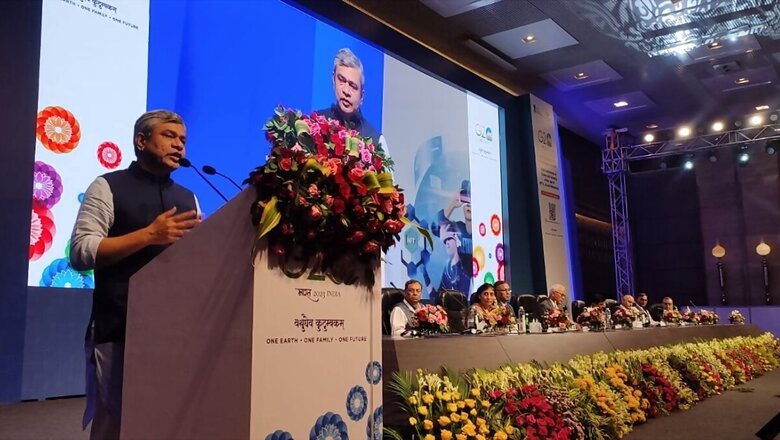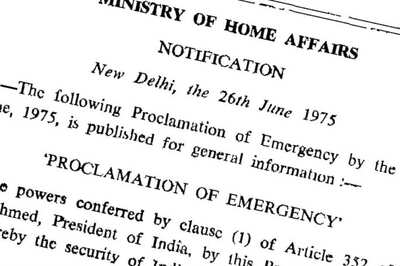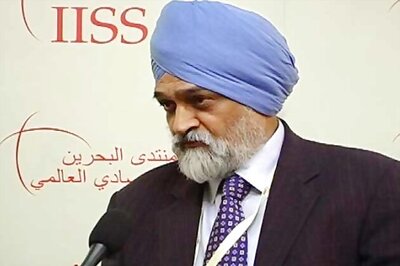
views
Union Electronics and Information Technology Minister Ashwini Vaishnaw has highlighted the “scary” part of Artificial Intelligence (AI), noting that a multi-pronged approach is needed to ensure cybersecurity in society.
Addressing the valedictory session of the G20 Conference on Crime and Security in the Age of NFTs, AI and Metaverse held in Gurugram, Vaishnaw spoke about cybersecurity challenges, Big Tech monopoly and major steps by the government to reduce the digital divide.
The minister in his speech stated that cybersecurity has been a complex challenge and AI is going to increase the complexity multi-fold.
Talking about AI, he mentioned what Sam Altman, CEO of OpenAI, said recently when he was asked whether AI can do basic research. Quoting Altman, the Union minister said: “AI can’t perform basic research but we are not far away from the day when AI will be doing the same basic research that the brightest minds have done.”
Vaishnaw called the phenomenon ‘scary’ as he added: “We have to have a strategy [for cybersecurity] at the national level, another one at the organisational level and one more strategy at the individual level. We cannot leave it thinking that there is a firewall and we can be secured with it.”
He also highlighted that if there is a cyber-attack in one country, other countries need to collaborate and come up with common solutions. He also spoke about developing new tools to reduce cybersecurity challenges.
“One of such solutions was so effective that we successfully blocked millions of fraudulent accounts which were used to conduct cyber frauds while working with Ministry of Home Affairs, Telecom Ministry, IT Ministry and state government,” he said. He added that that kind of approach needed to be taken at the international level also.
However, Vaishnaw said efforts need to be made at national and global levels for creating cyber awareness and following cyber rules for cyber hygiene — exactly the way legal as well as educational structures were made to teach everyone to drive on one side of the road when highway networks were created.
Democratisation of Tech
According to Vaishnaw, one major objective of the Digital India mission was that technology should be democratised. He further said in many parts of the world, a few big tech companies control technology and asked: “Is it the right model for the country or democracy or society which is evolving so fast?”
The Union minister then spoke about an alternative option which is needed for the democratisation of technology. It has three aspects which include that in no case should technology be cornered by a handful of companies, everyone should have access to technology and technology should encompass all the areas which affect the day-to-day life of a common person. Needless to say, to achieve these goals, the government took the public-private partnership.
The first example in this case is India’s UPI revolution. The UPI platform — an open platform available to everyone — was developed by the government using public funds. Later, banks, startups, and SMEs joined the platform.
“Close to 350 million citizens of India have joined this platform and the result is a payment system which today does about — on an annualised basis — $2 trillion worth transactions and the average time for the settlement of the transaction is less than two seconds,” he added.
However, similar platforms have been created for different needs. For e-commerce, there is Open Network for Digital Commerce (ONDC) and CoWIN for healthcare that was created during the peak of the Covid-19 pandemic.
Digital Divide
Literacy, lack of infrastructure and not being able to use already available tools are three major issues that have been the core of the digital divide. Vaishnaw said: “If we don’t work on digital inclusion today, the gap will increase at an exponential pace.”
He further stated that close to 850 million people in India have access to the internet “but that is not enough”. As per the minister, the government is working to bring every village and every part of the country under good high-quality 4G and 5G as well as broadband coverage.
“We have a programme to reach the farthest corner of the country — a 4G saturation programme. We are investing about $4.6 billion to bring telecom services to the areas where it may not make good commercial sense for the private sector to take 4G services,” Vaishnaw noted.
Additionally, he stated that by now, the government has invested $8.3 billion in creating an optical fibre grid so that each and every village gets connectivity. This is now augmented by investing another $13 billion under the BharatNet program.
“The way we have invested in highways and power grids in the past in developed countries and those which are developing today, the same kind of effort needs to be put in making sure that our internet connectivity, the optical fibre and the telecom network reach the last person in society,” he said.




















Comments
0 comment